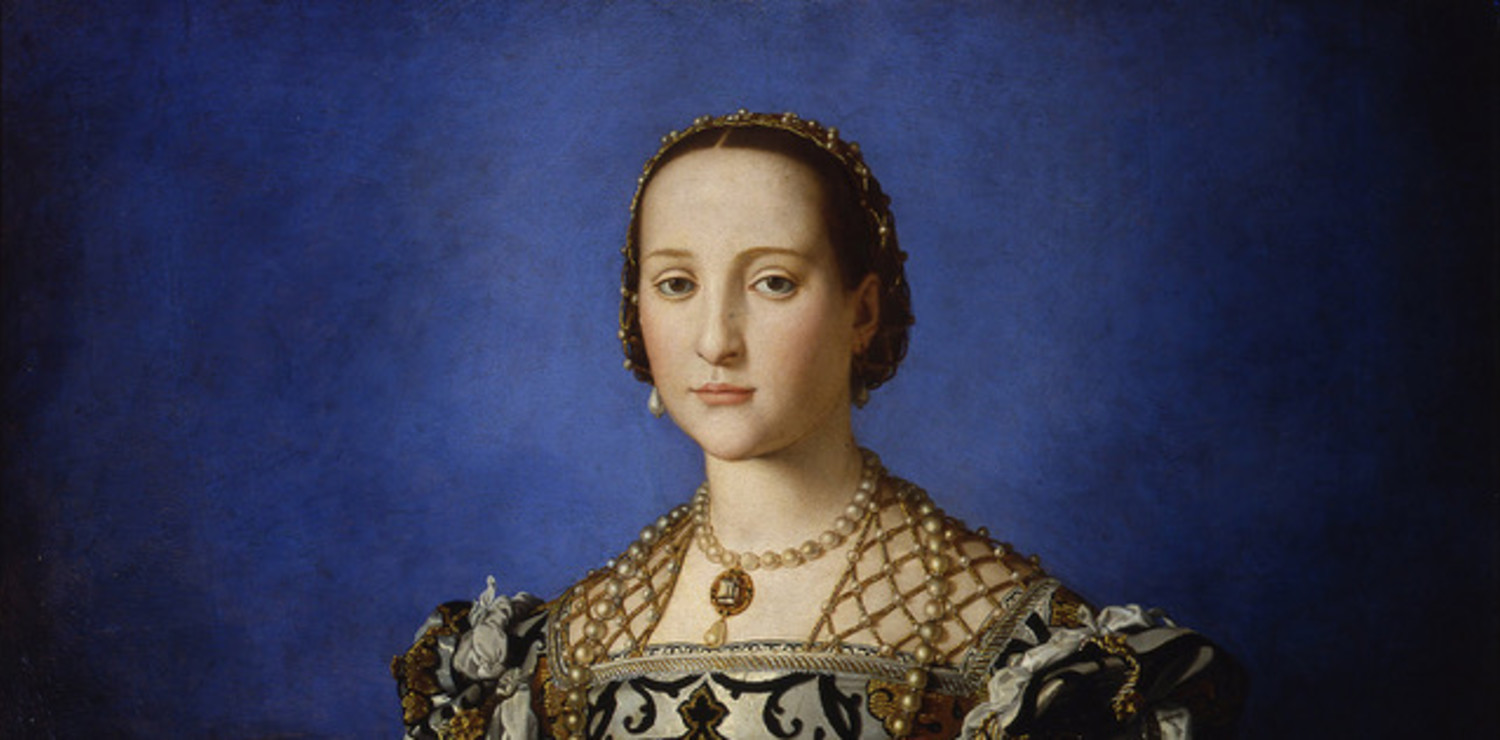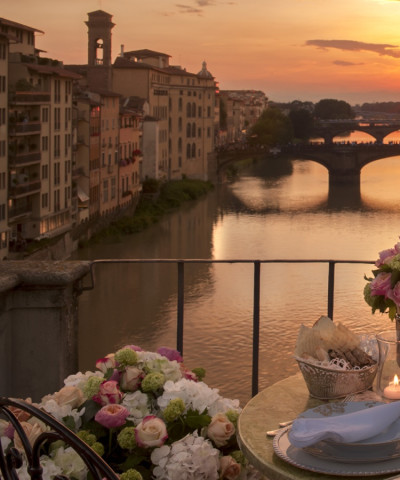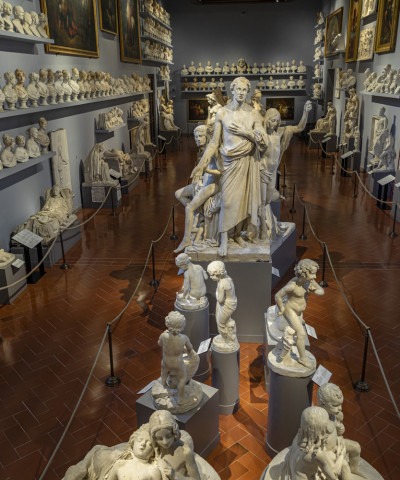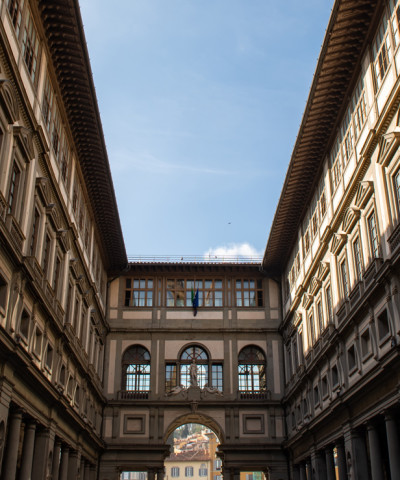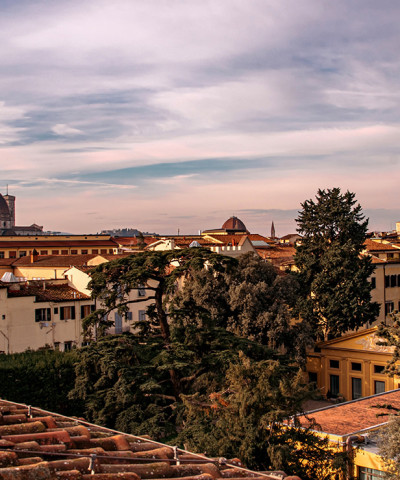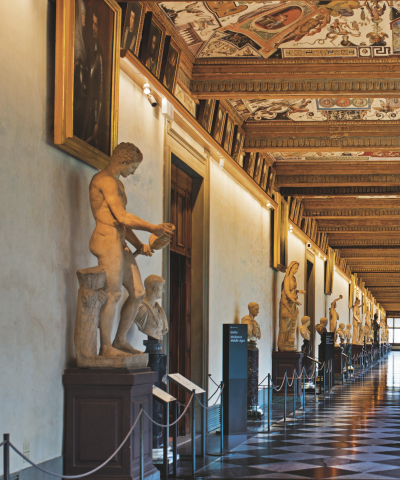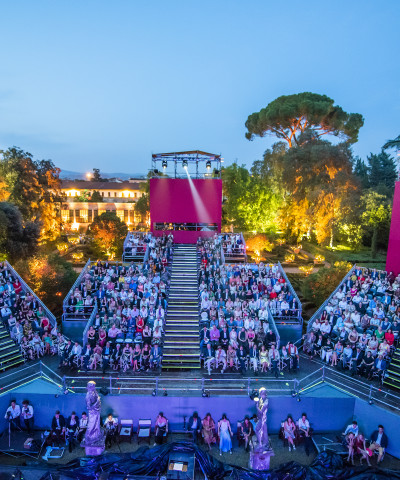Eleonora di Toledo
Everything you don't know about Cosimo I's wife
Beautiful, ethereal, as strong-willed as she was sweet. So Agnolo Bronzino immortalized her in the most famous of her portraits. But who was Eleonora di Toledo really? It is said of her that she was a beloved wife, who bought Pitti, who gave birth to a dynasty of princes. But Eleonora was much more.
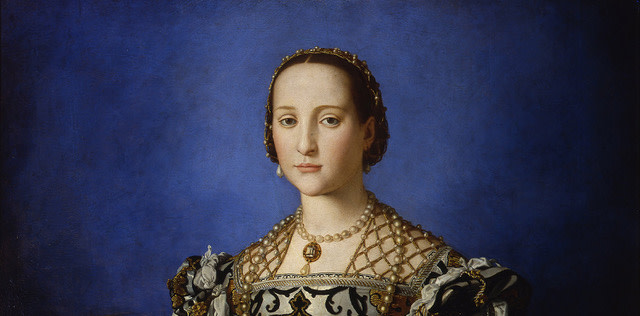 Il ritratto di Eleonora di Toledo del Bronzino
Il ritratto di Eleonora di Toledo del BronzinoShe married Cosimo I de' Medici in the spring of 1539, at the age of seventeen. Cosimo was looking for a bride who could help him strengthen his political position. He had initially asked for the hand of the widow of Duke Alessandro de' Medici, who had been murdered by his cousin Lorenzaccio. But Margaret of Austria, natural daughter of Charles V, had shown enormous reticence, which suited her father perfectly (who had other marriage plans for her). The Emperor, however, did not want to antagonise Cosimo and instead of the widowed archduchess proposed to him one of the daughters of the very rich Viceroy of Naples, one of the most influential men in the peninsula and who enjoyed his full confidence. Eleanor, who had already married by proxy on 29 March 1539, sailed from Naples on 11 June, accompanied by her brother Garcia with seven galleys in tow, and arrived in Livorno on the morning of 22 June. The same day she left for Pisa and halfway there met her husband Cosimo for the first time. After a short stay in Pisa, the ducal couple left for Florence, stopping for a few days at the Villa di Poggio a Caiano. On Sunday 29 June, there was the solemn entry of Duchess Eleonora into Florence through the Porta al Prato and the wedding in the church of San Lorenzo, with a grand celebration followed by sumptuous festivities.
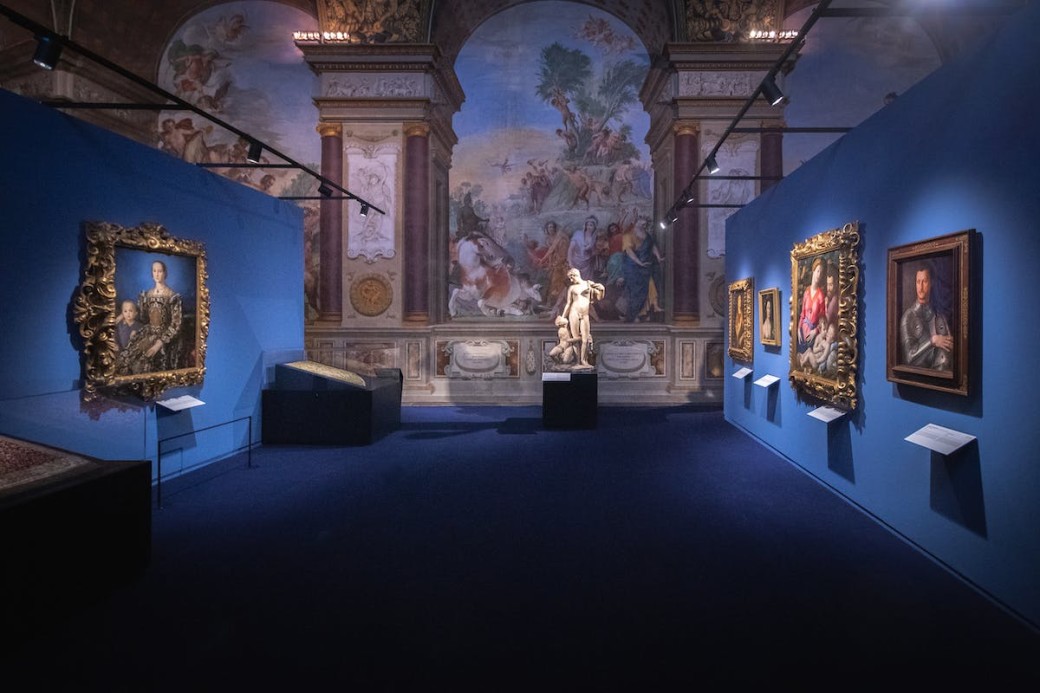 Mostra Eleonora di Toldeo
Mostra Eleonora di ToldeoShe was Cosimo I’s best business partner and the one who was be able to transform Tuscany into a kingdom, Florence into a court. As Bruce Edelstein, esteemed professor of Art History at New York University in Villa La Pietra tells us and explains in his impassioned book, Eleonora di Toledo and the Creation of the Boboli Gardens.
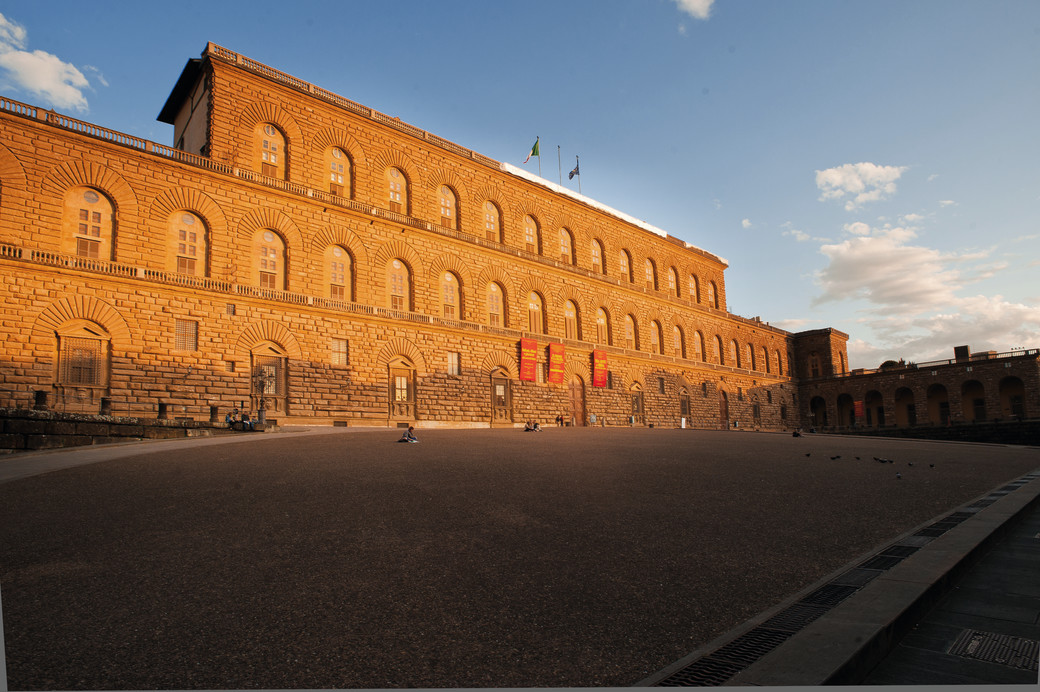 Palazzo Pitti (ph. Dario Garofalo)
Palazzo Pitti (ph. Dario Garofalo)“Everything actually originated with that portrait. I have been fascinated by it since I was a student”. A passion that led him, as he became one of the most authoritative scholars on the subject, to delve into and dissect the figure of this young Spanish girl who arrived in Italy at 12, married by proxy at 17 and died of malarial fever at only 40. Five hundred years after her birth, the debate on her role is still open. Starting right from the marriage.
Professor, you speak of pragmatism - was it not, then a love match?
I’m not saying that, but I don’t think Cosimo fell in love with her when he went to Naples with his cousin Alessandro, the year before the Duke of Florence was assassinated. It was, as always, an arranged marriage carried out by proxy. Then in reality it turned out to be a great union: in fact, they become perfect accomplices in their common intent to reconcile power and money. They worked in tandem for the same goals. And this was their strength.
In your book you also say that Cosimo considered himself a new Lorenzo the Magnificent.
There are many points in common between the two: an important mother and a foreign wife. Lucrezia and Clarice for Lorenzo, Maria Salviati and Eleonora for Cosimo. They were all key figures. Maria was left a widow at a young age (by Giovanni dalle Bande Nere ed) and with a small son, but she managed to keep the inheritance that would serve her son intact, a rare thing in her situation. She had an important diplomatic role in the Florence of the time, so much so that she would be fundamental both in choosing Cosimo as Alessandro’s successor and in choosing a daughter-in-law.
Her decision was undoubtedly felicitous.
Of course. Because Eleonora not only brought the culture of the Spanish court to Florence - just consider that her mother had been lady-in-waiting to Isabella the Catholic - but she also managed to impose the etiquette, protocol and modus operandi of a royal court. And although the Spaniards were not loved because they were supporters of the sack of Prato, the siege of Florence and more, it was thanks above all to her that Florence became a principality. It was she who took care of the management of the Palazzo, which was a rather complex machine made up of people, supplies, equipment, and fabrics and clothes for every day of the year and for every single person.
But Eleonora was able do much more, right?
Of course. Eleonora had special role. Above all, she is the only one who expanded the territory by buying land in the city, but also and above all outside, in the Pisan area.
And here we come to your revolutionary theory on Bronzino’s portrait.
According to my studies, the landscape in the background would not in fact be that of Poggio a Caiano as has been believed up to now, but that of Pisa. A non-random choice. While the Poggio hypothesis would confirm the painting as a dynastic portrait - Eleonora and her son Don Giovanni as Cosimo’s property - the hypothesis of the Pisan marshes reverses Eleonora’s role - no longer an object but a subject. Because they are lands purchased by her. It is she who had herself portrayed together with her second son (the succession was assured), as an icon. It is she who controlled the new territories and who appeared as a lay Madonna: beauty, motherhood and managerial role are merged in her gaze and confirmed in the sort of halo that surrounds her. With that dress where pine cones and pomegranates, typical fruits of motherhood and liturgical vestments, confirm her role as mother and wife.
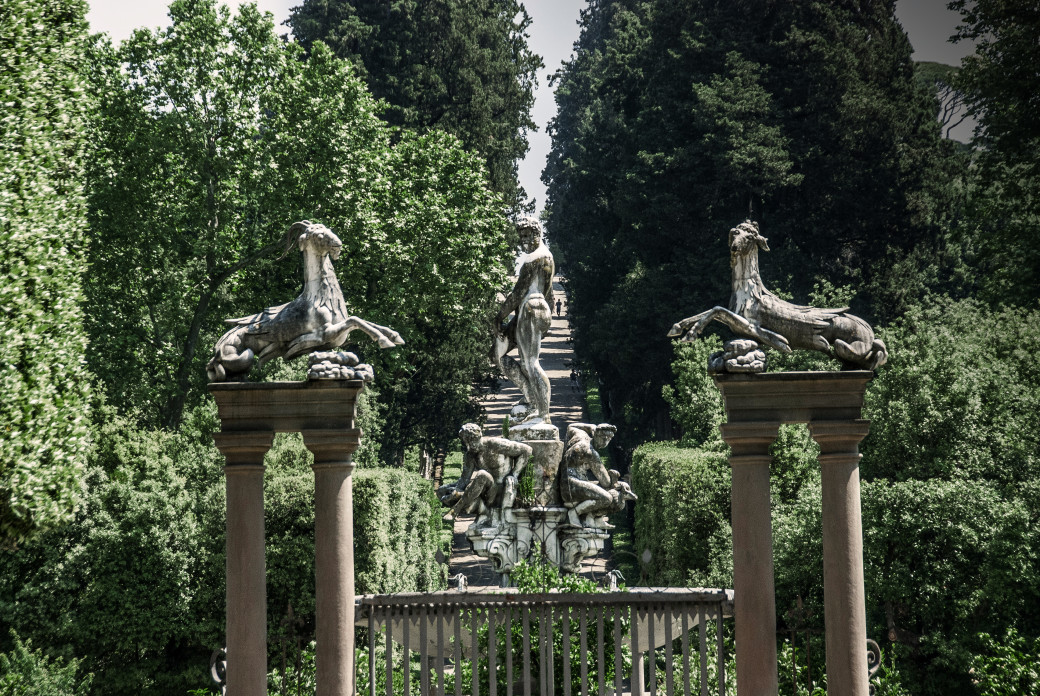 Boboli Gardens (ph. Lorenzo Cotrozzi)
Boboli Gardens (ph. Lorenzo Cotrozzi)Therefore, also decisive in the choice of Boboli...
Of course, the first thing to remember is her strong bond with the land. She created a hanging garden in Palazzo Vecchio (discover all the secrets of the palace here) had terraces and gardens painted in her apartments. It is no coincidence that she is always portrayed as Ceres, Opi, Abundance. Her first concern was always how to keep her family and her children healthy. And everything points to an increase in properties also for security reasons, as well as the primary function of gardens and water supply for the palace and the city. It was in her time that the first public fountain was created (the Neptune in Piazza della Signoria with the water coming from Boboli). Just consider that the first things she planted were wheat and vines. On the other hand, she had a monopoly on wheat and she sold the surplus to Spain.
So Boboli as an evolution of the Medici garden would not be exact.
I think it’s different. It is more connected to Pozzuoli where after the earthquake, Pedro (Eleonora’s father ed) bought land and a house to revive the city by bringing fresh water. Likewise, Boboli was a source of water. In Pozzuoli, Pedro planted wheat and grapes and so would his daughter in Boboli. From the beginning Boboli was one with the city. The garden that Tribolo created would be a model for the future palaces of Europe, starting with the Luxembourg Gardens in Paris created by Mary, Queen of France on the death of her husband. The amphitheatre of greenery, as it appears in the lunette by Giusto Utens made about forty years after Eleonora’s death, gives us a fairly true image of the Boboli she wanted - an agricultural, safe place (discover our unpublished Boboli Garden itinerary and all its secrets here!).
Which is a place that has remained intact?
I would say the Grotticina created for her and never transformed. It is an environment in perfect Eleonora style. Unlike the Buontalenti Grotto which at the time was a reservoir with a fish hatchery.






